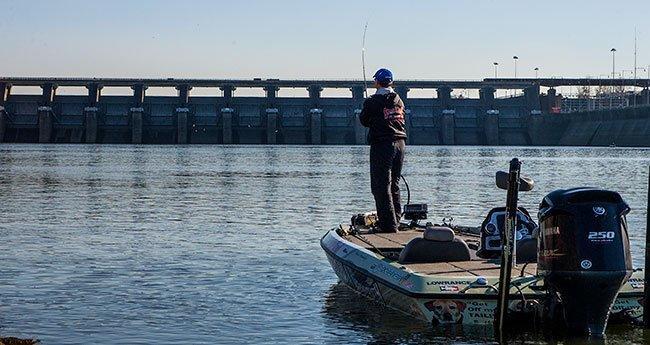Senators, Representatives and even the TWRA has been lobbying and gathering support to block the U.S. Army Corps of Engineers for their attempted closure of 10 tailwater areas along the Cumberland River system in the Nashville District. The COE is citing safety as its reason for these closures. However the Freedom to Fish Act has assembled a Fact Sheet that pokes some holes in that safety issue:
- The U.S. Army Corps of Engineers touted safety as a main reason to use barricades to restrict boating access below its dams; the Corps cited 14 drownings below 10 dams in 42 years. Truth Uncovered: In 42 years, drownings during non-spill (gates closed) events = 0. Drownings during spill events with warning system used = 4. Drownings from the bank = 5. More have drowned from the bank than from boats when warnings systems were used, yet bank fishing will still be encouraged and boaters barricaded.
- The Corps used 10 near-miss incidents to imply life vests don’t work in waters below the dams; however, they worked for ALL 10 near-misses when they were worn properly, revealing an impressive safety record.
- Truth Uncovered: During a time of national budget crisis, the Corps reports the barricades will cost at least $2.6 million. The money will come from delaying hiring of personnel and reducing recreation area (campground) service levels & maintenance.
- Truth Uncovered: The cost to our river communities will be enormous. In 2000, the KDFWR estimated the economic value of the Barkley Dam tailwater to be over $3 million dollars. Multiply that by 10 dams. Now add in the hit to our tourist destinations such as the campgrounds that will face cutbacks to pay for the barricades. The result is financially devastating.
- The Corps states it must barricade in order to meet its own regulations. Truth Uncovered: All District Commanders since the dams were built clearly believed barricades to be unnecessary in meeting Corps regulations. The Corps’ own Lake Barkley operational management plan states: “A physical barrier to boats is not practical either upstream or downstream of the power plant, spillway and lock… Turbulent waters and floating debris prohibit the installation of a continuous barrier in the tailwaters. The danger buoys and signs provide sufficient warning of the hazards and there is NO NEED FOR A BARRIER TO KEEP VESSELS FROM ENTERING THE RESTRICTED AREAS.”
- Truth Uncovered: District Commander James DeLapp has not followed the Corps’ own policy to include federal, state and local agencies in this drastic change to its operations. We have learned the Corps considered 3 alternatives to full barricades, but it refuses to share those options with the public despite a Freedom of Information Act request.
- Truth Uncovered: Nothing says it better than the Corps’ own current operational management plan””the plan that District Commander DeLapp wants to change: “Since the project was constructed in 1967, the visiting public has used the area around the dam primarily for fishing. Current restrictions, procedures and operational considerations such as requiring PFD’s and limiting access during discharges, have permitted safe public access to the facilities.” Current Operational Management Plan – Lake Barkley, Section 32-4
- Tailwater drownings = 4. Drownings on lakes and beaches = 881. Cost of 10 barricades = $2.7 million. Cost to our economy = millions. Freedom to fish = priceless.
For more information on these topics, contact Wade White, Lyon County Judge/Executive lyoncountyjudge@gmail.com. Or on Facebook at Freedom to Fish Act.












